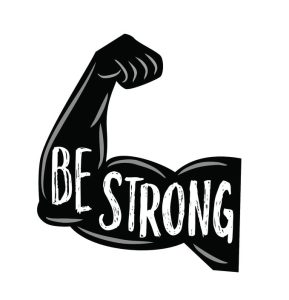
“Low-T”? There’s a workout for that! Testosterone is a steroid hormone that encourages the development of lean muscle mass and bone density. Naturally, finding ways to boost production of this hormone is a worthy endeavor for any personal trainer.
A typical adult male body is capable of producing anywhere from 5-10 milligrams of testosterone per day; averages for adult females tend to run at least 10-fold less.
However, it is important to keep in mind that testosterone affects many more systems in the body than simply distinguishing gender.
Men who exhibit low testosterone levels tend to have higher rates of heart disease, depression, and dementia. A dip in a female’s testosterone levels can lead to weight gain and a loss of muscle mass.
Far-Reaching Touch Of Testosterone
Testosterone is also involved in the following human processes:
- Muscles: Increases protein synthesis, muscle mass, and strength
- Body Fat: Blocks the uptake/storage of fat and increases the number of fat burning beta-adrenergic receptors
- Brain: Improves cognition, memory and sex drive
- Heart: Increases blood flow/ cardiac output.
- Bone: Increases red blood cell production and maintains bone density
- Male Sex Organs: Supports sperm production and viability
- Skin: Supports collagen and hair production
- Kidneys: Produces erythropoietin (EPO), which stimulates red blood cell production.
While recognizing the importance of appropriate levels of testosterone in a healthy body, serious athletes and competitive bodybuilders – both male and female — are often striving for any “edge” that might provide an advantage in their sport.
Many will turn to illegal substance use in an effort to reap the benefits of excess testosterone. We now know that choosing specific exercises can also ignite the body’s hormone-boosting capabilities. We can easily implement this strategy as we help clients suffering from what is commonly referred to as “Low T”.
Hit The Sprints
Sprinting is often included in such workouts. Research demonstrated that testosterone levels increased significantly in participants who performed a series of very short but intense 6-second sprints. Interestingly, these elevated testosterone levels tended to remain high even after a full recovery period.
When creating such a program for clients, trainers might choose to include several sprints on the treadmill after concluding the weight-training portion of the workout. 5-10 short sprints, no longer than 15 seconds in duration, are an ideal place to begin.
Always ensure that the client achieves full recovery after each sprint, which typically translates to an “active rest” (walking) 3-4 times longer than the sprint’s duration. For optimal results, this workout can be performed 2-3 times a week.
More Joints, More Power, More Hormone
According to Thomas King, M.S., C.S.C.S., strength and conditioning coach at JK Conditioning in St. John’s, Newfoundland, Canada,multi-joint exercises that utilize the body’s largest muscle groups also show great promise in boosting testosterone.
King suggests adding squats, deadlifts, Olympic lifts, bench presses, lunges, rows, pull ups and overhead presses to a client’s program. “These exercises work because they recruit a significant amount of muscle mass, and the amount of muscle mass recruited during an exercise has been shown to be an important factor in the release of testosterone,” King says.
Expert trainers suggest engaging in a total-body workout 2-3 times a week.
In his book The Exercise Cure, Sports Medicine physician Jordan Metzl states, “In general, all types of exercise stimulate the release and production of testosterone. But there is data to suggest that lifting weights and high-intensity work might stimulate the greatest release of testosterone.”
Depending on each client’s individual experience and strength, heavy full-body exercises can be performed using 85%-95% of the client’s 1-rep max. While this range has shown to optimize muscle growth and circulating levels of testosterone, some studies have been undertaken to demonstrate how forced repetitions can have a more potent effect on hormone levels than a traditional resistance-training workout.
This protocol involves the client executing as many reps as he can without assistance, followed by 1-5 additional reps with help from the trainer. Once again, multi-joint, large motor movements are the best choice when performing forced reps.
Timing is the Testosterone Trick
Testosterone levels vary throughout the day, often peaking in the morning and dropping in the afternoon. Scientists have shown that strength-training workouts may have a bigger effect on testosterone when performed later in the day.
Endocrinologist Scott Isaacs, MD, of Emory University, suggests that the brief testosterone boost experienced post-exercise might play an even more significant role if clients visit the gym after work as opposed to before their morning commute.
Power Versus Endurance
Endurance sports such as cycling and marathon running seem to diminish testosterone levels. A client who is preparing for a triathlon or an Ironman, therefore, may have to settle for slightly lower circulating hormone levels. However, appropriate training/rest/nutrition/guidance will enable him to succeed regardless, since this potent hormone does not define an athlete’s abilities.
Our Scope of Practice
If a client attempts to engage you in a conversation regarding the use of steroids to boost a low testosterone level, I would suggest referring him to an endocrinologist. These specially trained physicians can then assess the client from a medical point of view rather than merely sports enhancement. There are prescription medications on the market to address this issue in a safe and monitored fashion.
What are your workout ideas for boosting low T?
Check out this article, also!
The Hormonal Influence Link from Exercise and Diet
References
- https://www.mensjournal.com/health-fitness/7-exercises-naturally-increase-testosterone-men/1-deadlift-4/
- https://www.mensjournal.com/health-fitness/workout-boost-your-testosterone/
- https://www.muscleandfitness.com/workouts/workout-tips/8-ways-be-alpha-male-tomorrow-0
- https://www.webmd.com/men/features/exercise-and-testosterone#1
- https://www.bodybuilding.com/content/all-about-testosterone.html
- https://www.quickanddirtytips.com/health-fitness/mens-health/6-ways-to-increase-testosterone-with-exercise
Cathleen Kronemer is an NFPT CEC writer and a member of the NFPT Certification Council Board. Cathleen is an AFAA-Certified Group Exercise Instructor, NSCA-Certified Personal Trainer, ACE-Certified Health Coach, former competitive bodybuilder and freelance writer. She is employed at the Jewish Community Center in St. Louis, MO. Cathleen has been involved in the fitness industry for over three decades. Feel free to contact her at trainhard@kronemer.com. She welcomes your feedback and your comments!

